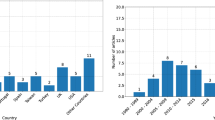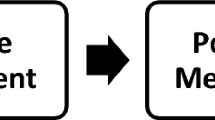Abstract
Most current risk assessment methods use the risk priority number (RPN) value to evaluate the risk of failure. However, traditional RPN methodology has been criticized to have several shortcomings. Therefore, an efficient, simplified algorithm to evaluate the orderings of risk for failure problems is proposed in this paper, which utilizes fuzzy ordered weighted averaging (OWA) and the decision making trial and evaluation laboratory (DEMATEL) approach to rank the risk of failure. The proposed approach resolves some of the shortcomings of the traditional RPN method. In numerical verification, a failure mode and effects analysis (FMEA) of the thin film transistor liquid crystal display (TFT-LCD) product is presented to further illustrate the proposed approach. The results show that the proposed approach can reduce duplicated RPN numbers and get a more accurate, reasonable risk assessment. As a result, the stability of product and process can be assured.
Similar content being viewed by others
References
Bowles, J. B. (2003). An assessment of RPN prioritization in a failure modes effects and criticality analysis. Processing annual reliability and maintainability symposium (pp. 380–386).
Bowles J.B., Pelaez C.E. (1995) Fuzzy logic prioritization of failures in a system failure modes, effects and criticality analysis. Reliability Engineering & System Safety 50(2): 203–213. doi:10.1016/0951-8320(95)00068-D
Chang K.H., Cheng C.H., Chang Y.C. (2008) Reliability assessment of an aircraft propulsion system using IFS and OWA tree. Engineering Optimization 40(10): 907–921. doi:10.1080/03052150802132914
Chang, K. H., Cheng, C. H., & Chang, Y. C. (2009). Reprioritization of failures in a silane supply system using an intuitionistic fuzzy set ranking technique. Soft Computing (in press).
Cheng C.H., Chang J.R. (2006) MCDM aggregation model using situational ME-OWA and ME-OWGA operators. International Journal of Uncertainty. Fuzziness and Knowledge-Based Systems 14(4): 421–443. doi:10.1142/S0218488506004102
Evie M.C.G. (2008) Which is the correct statistical test to use?. The British Journal of Oral & Maxillofacial Surgery 46(1): 38–41. doi:10.1016/j.bjoms.2007.09.002
Filev D., Yager R.R. (1995) Analytic properties of maximum entropy OWA operator. Information Sciences 85(1–3): 11–27. doi:10.1016/0020-0255(94)00109-O
Fuller R., Majlender P. (2001) An analytic approach for obtaining maximal entropy OWA operator weights. Fuzzy Sets and Systems 124(1): 53–57. doi:10.1016/S0165-0114(01)00007-0
Gabus, A., & Fontela, E. (1973). Perceptions of the world problematique: Communication procedure, communicating with those bearing collective responsibility (DEMATEL Report No.1). Geneva, Switzerland: Battelle Geneva Research Centre.
O’Hagan, M. (1988). Aggregating template or rule antecedents in real-time expert systems with fuzzy set logic. In Proceedings of the 22nd annual IEEE asilomar conference on signals, systems, computers (pp. 681–689), Pacific Grove, CA.
Pillay A., Wang J. (2003) Modified failure mode and effects analysis using approximate reasoning. Reliability Engineering & System Safety 79(1): 69–85. doi:10.1016/S0951-8320(02)00179-5
Sadiq R., Tesfamariam S. (2007) Probability density functions based weights for ordered weighted averaging (OWA) operators: An example of water quality indices. European Journal of Operational Research 182(3): 1350–1368. doi:10.1016/j.ejor.2006.09.041
Sankar N.R., Prabhu B.S. (2001) Modified approach for prioritization of failures in a system failure mode and effects analysis. International Journal of Quality & Reliability Management 18(3): 324–335. doi:10.1108/02656710110383737
Seyed-Hosseini S.M., Safaei N., Asgharpour M.J. (2006) Reprioritization of failures in a system failure mode and effects analysis by decision making trial and evaluation laboratory technique. Reliability Engineering & System Safety 91(8): 872–881. doi:10.1016/j.ress.2005.09.005
US Department of Defense Washington. DC. (1980). Procedures for performing a failure mode effects and criticality analysis, US MIL-STD-1629A.
Wang J., Ruxton T., Labrie C.R. (1995) Design for safety of engineering systems with multiple failure state variables. Reliability Engineering & System Safety 50(3): 271–284
Wu W.W., Lee Y.T. (2007) Developing global managers’ competencies using the fuzzy DEMATEL method. Expert Systems with Applications 32(2): 499–507. doi:10.1016/j.eswa.2005.12.005
Xu K., Tang L.C., Xie M., Ho S.L., Zhu M.L. (2002) Fuzzy assessment of FMEA for engine systems. Reliability Engineering & System Safety 75(1): 17–29. doi:10.1016/S0951-8320(01)00101-6
Yager R.R. (1988) On ordered weighted averaging aggregation operators in multi-criteria decision making. IEEE Transactions on Systems, Man, and Cybernetics 18(1): 183–190. doi:10.1109/21.87068
Zadeh L.A. (1965) Fuzzy sets. Information and Control 8(3): 338–353. doi:10.1016/S0019-9958(65)90241-X
Author information
Authors and Affiliations
Corresponding author
Rights and permissions
About this article
Cite this article
Chang, KH., Cheng, CH. Evaluating the risk of failure using the fuzzy OWA and DEMATEL method. J Intell Manuf 22, 113–129 (2011). https://doi.org/10.1007/s10845-009-0266-x
Received:
Accepted:
Published:
Issue Date:
DOI: https://doi.org/10.1007/s10845-009-0266-x




